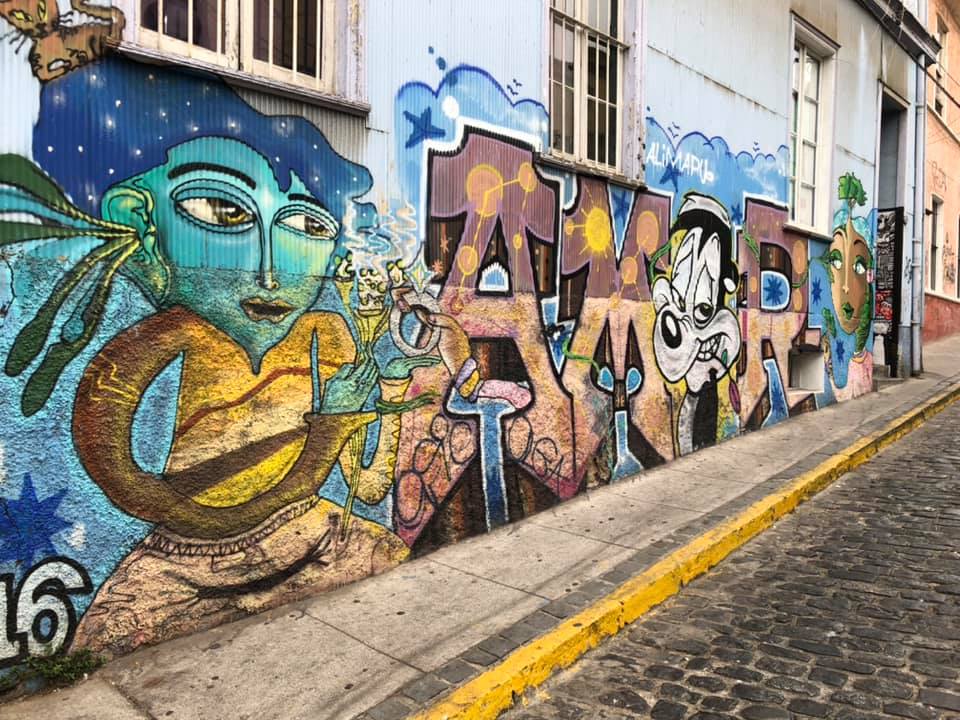OALP XIX Seminar 13 (Chile Part 2)
Sunday, February 23, 2020
Sunday morning, our class enjoyed a hike through Monumento Natural Cerro Nielol. Felipe, our guide, works with Sendero de Chile, an organization created to educate the citizens of Chile about the natural environment. The park encompasses about 250 acres. We did not see much wildlife, but were told the area has many species of plants and wildlife. We saw six 30-foot tall Mapuche statues, placed there to remember the native people. We were told that not many Chileans use parks like this one, and they are working to bring awareness to their nature parks to have more people visit them.
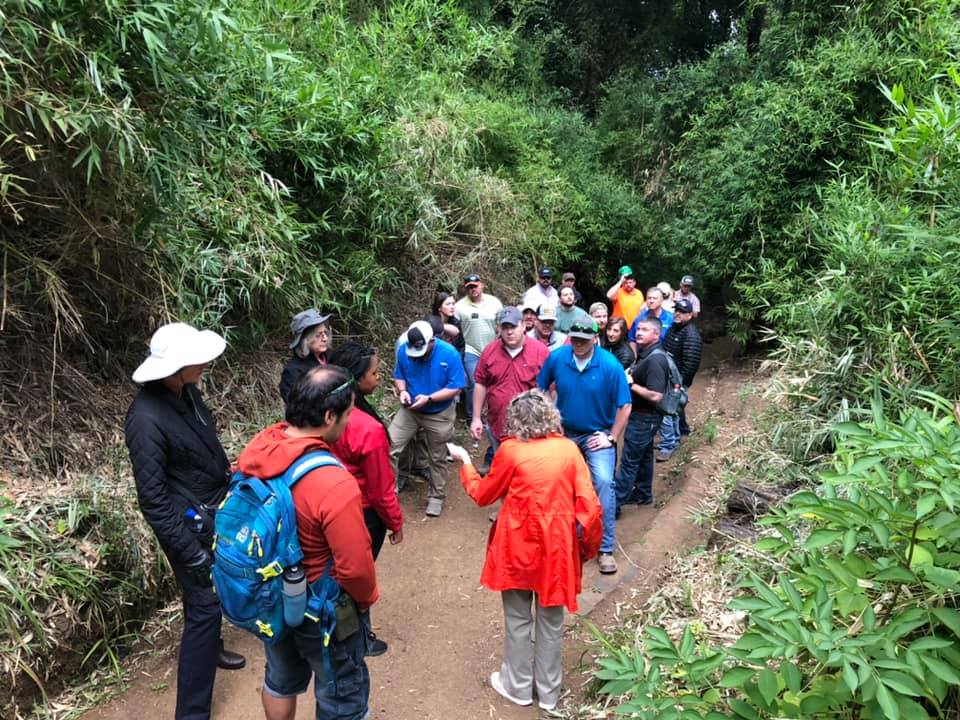
Later in the day we traveled toward the coast on our tour bus. From the bus we had a brief walk toward the Mokul River and hopped on a ferry along with the locals from the island and visitors. After the short ferry ride, we reached the other side of the river and most of the group climbed up and over the volcanic sand hill for a beautiful view of the Pacific Ocean. A few of us even dipped our feet in the very cold ocean then warmed them on the black volcanic sand.
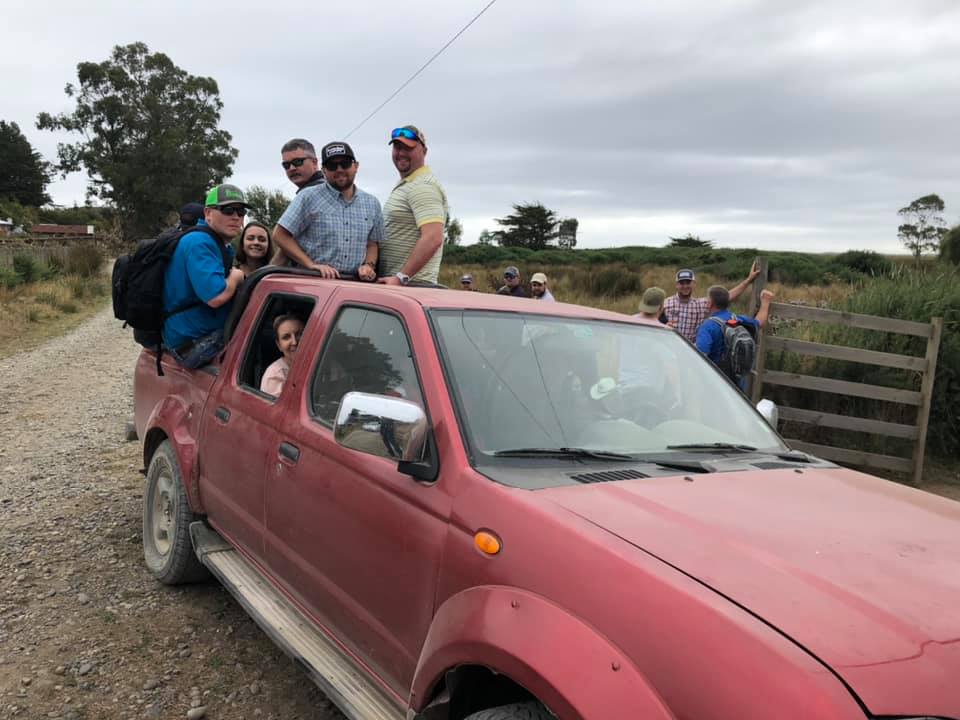
After defeating the hill, we all rode in local vehicles and drove to Monkul Kewen Ko. They invited us into their thatched hut called a Raku where we were served lunch. The Raku was built to show the tourists how the Mapuche natives used to live. We started with an interesting mussel ceviche and then had lamb that was cooked outside over an open fire, with potatoes and green beans. The area was turned into wetlands in 1960 after an enormous earthquake and tsunami occurred and most of the farmland sank. They have been making the area into an ecotourism venue where they want to teach people about the native Mapuche people. After our meal, we watched their tourism/informational videos about the area. We then climbed another massive hill and got to enjoy great views of the wetlands. We traveled back to our hotel where we had a late dinner.
Monday, February 24, 2020
Andreas Kobrich, Executive Secretary for the Society for Agricultural Development of Temuco, gave the first presentation of the day. The purpose of the organization is to develop the agricultural industry of the area around Temuco by educating small and medium scale farmers to increase production and profitability. This area of Chile has a long and checkered history of interaction between native tribes and the arrival of Europeans and other people, much like Oklahoma. This past has left lingering issues in the area that this organizations hopes to play a role in overcoming through agricultural development. One issue is the water situation in Chile. In the media, the lack of water for residents has been widely documented. In this area of Chile there is abundant water, however people have not been wise in efficiently using it or choosing home and business sites that have proven water available before building. The country is now drilling deep water wells out of necessity over much of the area and people are finding abundant water.
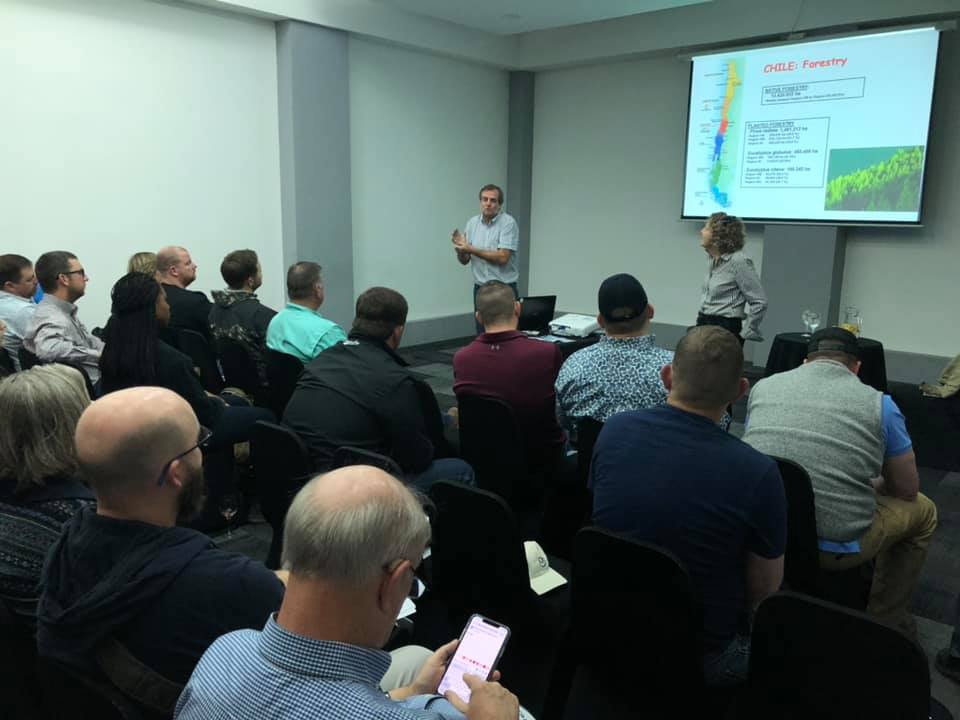
Our next trip to Llamas del Sur was a pleasant and entertaining experience. The animals were friendly and curious, and they loved interacting with our large group of people. Our host, Alejandro, gave us an informative tour and discussion of the farm and the animals. The farm uses a rotational grazing program with ryegrass as their main forage base. The farm business is centered on production of breeding animals and agritourism. There is a small store filled with high quality alpaca wool garments on the property as well as a goat petting pen and an outdoor dining area. We enjoyed a fantastic outdoor meal of traditional empanadas and Chilean wine.
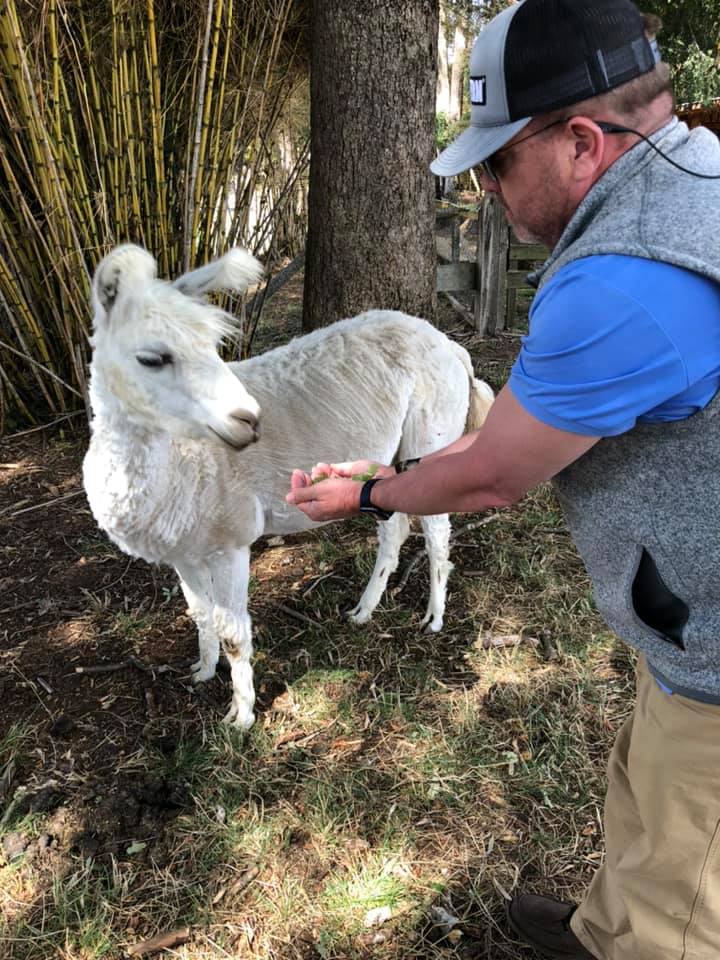
Semillas Baer was our third stop of the day. This is a family-operated seed production company that provides different varieties of wheat, canola, barley, lupine, and other seeds to local farmers. Two generations of the family were present to give tours of the facility. The goal of the family is to breed varieties of crops that are well-suited for both the area immediately adjacent to the facility and throughout Chile. Chile has unique soils and climate, so the Semillas Baer Company fills a much needed void for Chilean farmers. One of the most unique and promising crops in the facility was lupine. It is a broadleaf cool-season plant with a seed like a black-eyed pea. It varies in quality and characteristics, but it has a high protein (up to 44%) and fat content that makes it an intriguing animal feed. It has become profitable in Chile because of its popularity in the salmon feeding business. The high protein and low tannin variety of seeds has also shown to increase conception rate in the resident sheep herd around the facility. The most popular event of the year is a field day held by the company to showcase new varieties for farmers to purchase and to gain valuable feedback from farmers regarding the performance of the previous year’s varieties. Overall, it was a fantastic experience to see a successful family-owned agribusiness thrive and fill a valuable niche for the farmers of Chile.
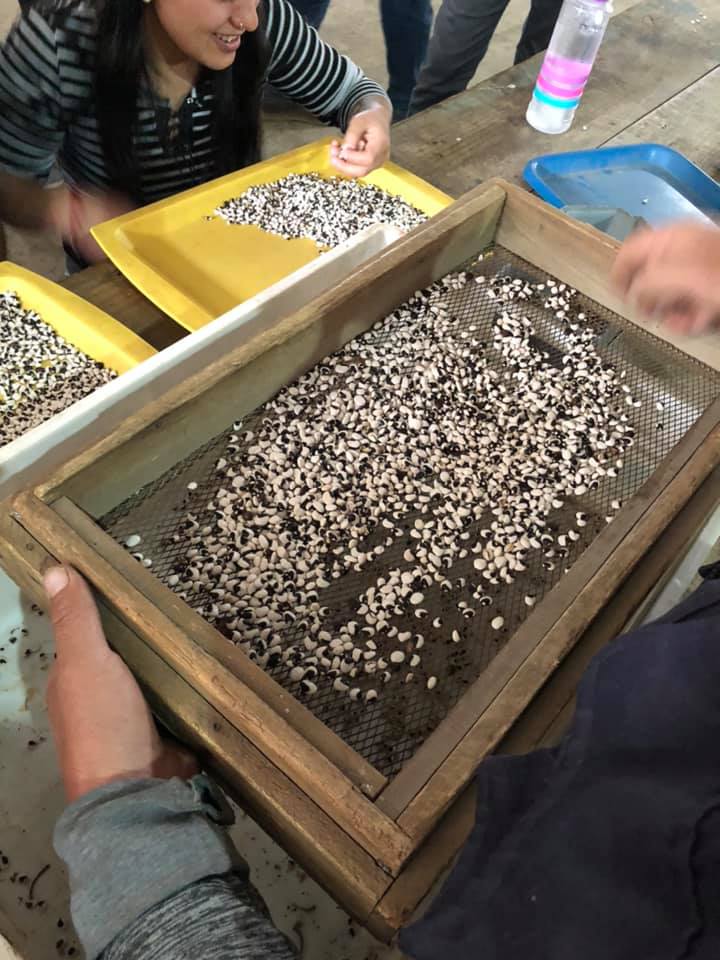
Tuesday, February 25, 2020
We visited small fruit and vegetable farms in the Mapuche tribe area. The first farm we visited belonged to a lady named Francisca and her family. She has been producing raspberries for four years and sells all of her produce at the local farmers market. She has been experimenting with different varieties of raspberries. They have a reservoir that stores over 250,000 gallons of rainfall water runoff, and they also pump water from the river using a solar-powered pump. Her farm is GAP certified. They also have a greenhouse where they grow many different vegetables for the market. The next farm we went to was owned by Juan Carlos. He has about 20 acres and has been growing cabbage, broccoli, cauliflower, and celery. All of his water for irrigation comes from a natural spring. He also has a side business where people come from the city to relax and enjoy their own native culture.
At our next stop, we visited a Raku-type hut where we were served sopapillas, salsa, cheese, jelly, roasted wheat coffee, and tea. The food was very good. The host was very gracious, and we enjoyed partaking in some of the native rituals of this area.
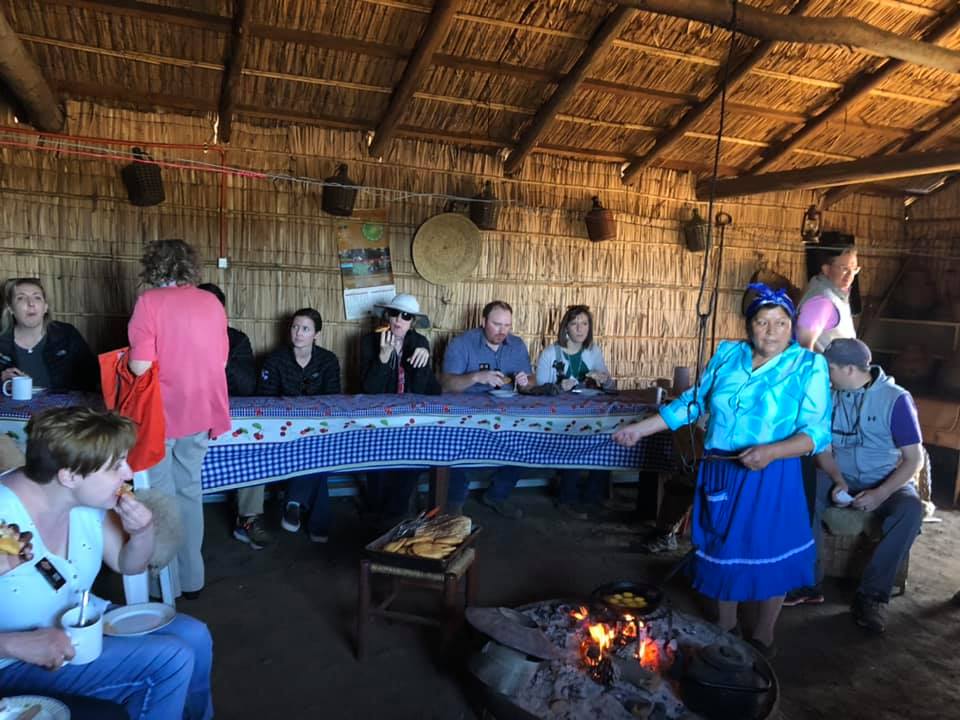
Our final stop was at a 3-acre farm in the driest part of this area. They obtain water from a deep well and also have a reservoir that holds about 275,000 gallons of water. The reservoir has a roof which helps catch rainwater and prevents evaporation. This farm, like many of the other farms we visited, produce fruits and vegetables to be sold at the farmers market. It was very informational to see how some of the people in this area have been able to survive and adapt to the current conditions of this region. The INDAP is working closely with many the local producers to assist with agriculture produce information and/or financial assistance. We arrived back at the hotel earlier than usual and were able to have a little time for ourselves. Many of us were able to find some very authentic dining at a local restaurant and were then able to have a night cap, which is always the highlight of the day.
Wednesday, February 26, 2020
We began the day by visiting with Chilean farmer Andres Vera. He produces grains, including wheat and rapeseed, and focuses on the fattening and finishing of beef cattle on approximately 600 hectares he owns and leases. Some of his wheat is stored in silo bags in the field. In addition to his profession as a farmer, Vera also is the regional president of his local farmers’ discussion group. His discussion group consists of 12-15 farmers who meet once a month to share experiences and provide suggestions to improve production.
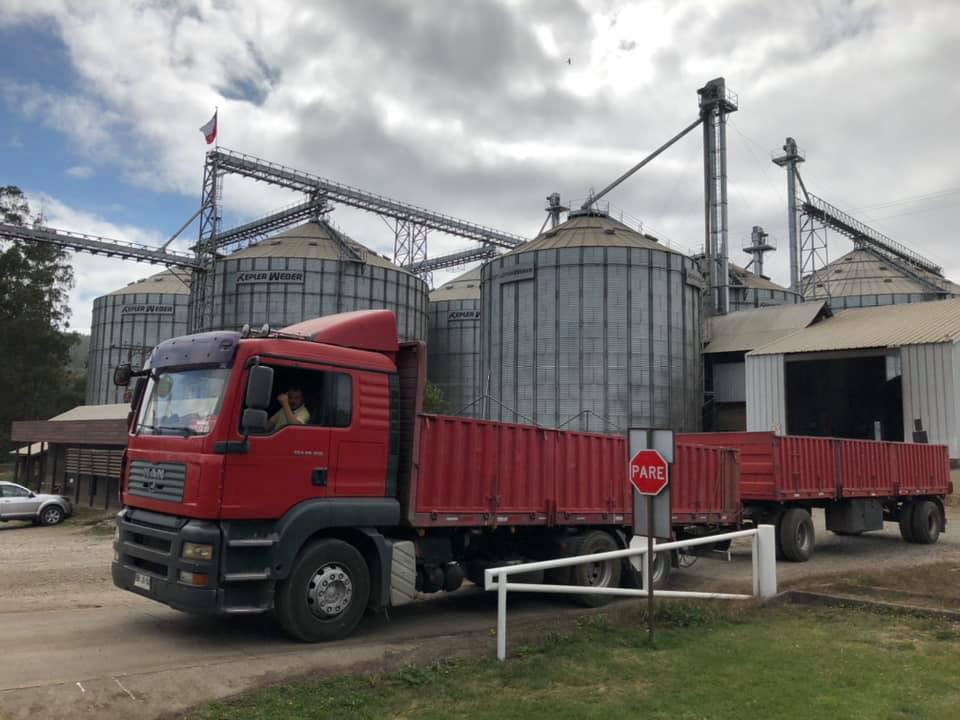
Our next stop was Empresas Gorbea where we witnessed several phases of the family-owned mill at work. We saw the offloading of rapeseed and the process of turning the rapeseed into oil. Additionally, we peeked into their testing lab. We enjoyed a hearty bowl of soup at Nicris Restaurant before traveling to Puerto Varas for an evening of shopping, dinner, and sightseeing. We wrapped up the day by arriving at our last hotel of the trip where we had a breathtaking view of Osorno Volcano.
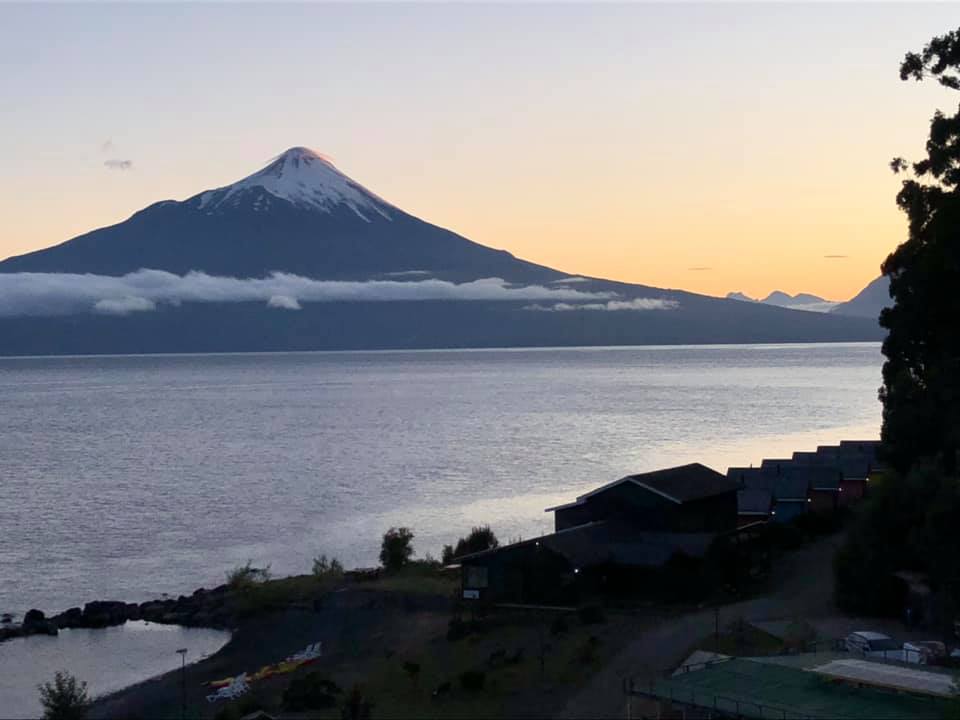
Thursday, February 27, 2020
We started our day with a bus ride to meet Ricardo Hevia, owner and operator of Ganadera California Angus in Osorno, Chile. Mr. Hevia has quite the operation built with well-known registered Angus bloodlines from the United States. If you could hear Ricardo speak, you would have no idea you weren’t on an American Angus operation, which is the model for his operation. Ricardo was part of an extension program known as California Chile where he was able to travel to California. While on his trips, he fell in love the with the Angus breed of cattle. “Black Angus” are his breed of choice and don’t try to influence his decision making by bringing up Red Angus. Mr. Hevia strictly pastures his cattle – there is no grain finishing. He showed us his heifers, cows and bulls, as well as his working facilities. Later, he explained the differences in the American beef industry and the Chilean beef industry. The most notable difference is a Chilean producer does not take his animals to a sale barn. The buyers in Chile will come to the ranch and make you an offer. If you accept their offer, they will come pick up your animals and take them to their slaughter facility.
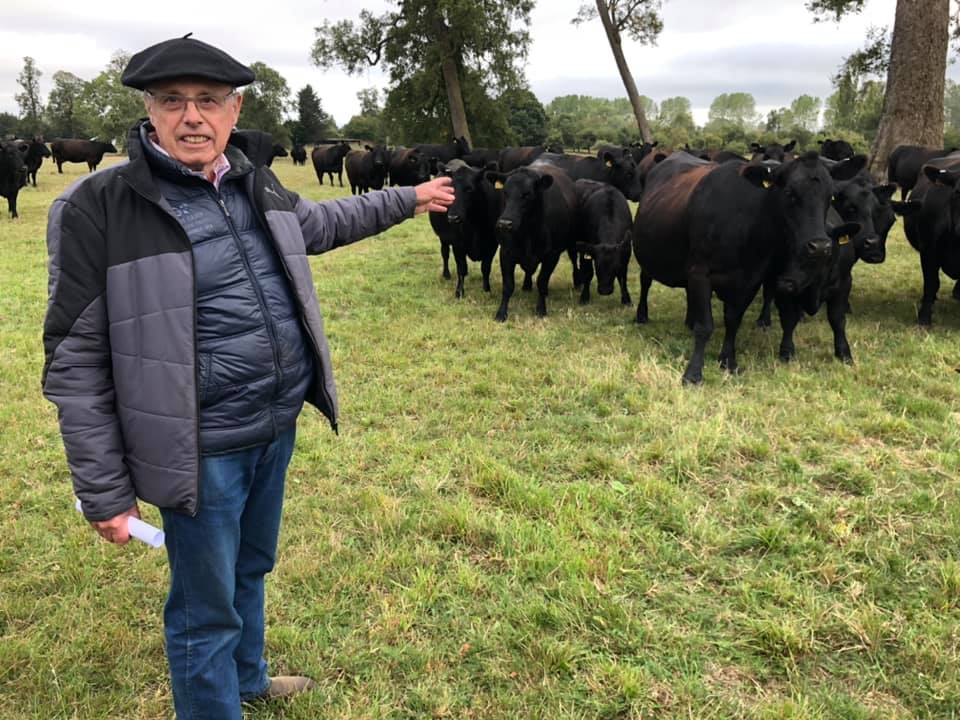
After lunch we traveled to visit Nelson Garcia and his nationally renowned Chilean Rodeo Horse operation. He explained to us the requirements and look of the Chilean rodeo horse which is much smaller than the American Quarter Horses used in American Rodeos. The horses weren’t the only differences in American and Chilean rodeos. They do not rope calves in Chilean rodeos. Instead, their events look much like team cutting horse competitions here in the United States. The Chilean rodeo cowboys work the steers around a circle arena in and out of gated areas for a score. We finished our visit there with a traditional Chilean tea. Later that night, we had a farewell dinner at the hotel and a ceremonial burning of the coin bag.
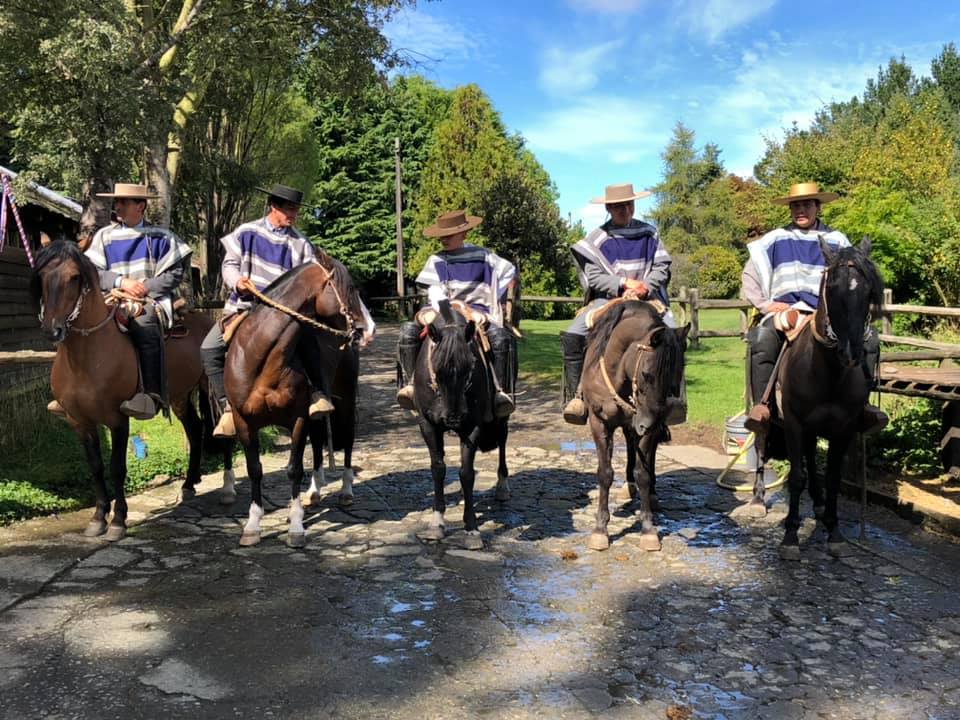
Friday, February 28, 2020
Our day began with breakfast and coffee overlooking Llanquihue Lake and the Osorno volcano. We packed our bags and loaded them on the bus and set off on an excursion to see some local sights before we headed to the airport. Our first stop of the morning was at a national park called Vicente Perez Rosales, where we walked along a pathway over waterfalls and whitewater rapids. We spent about a half hour there looking at the waterfalls, taking pictures, and being amazed at the pureness of the glacial water flowing all around us.
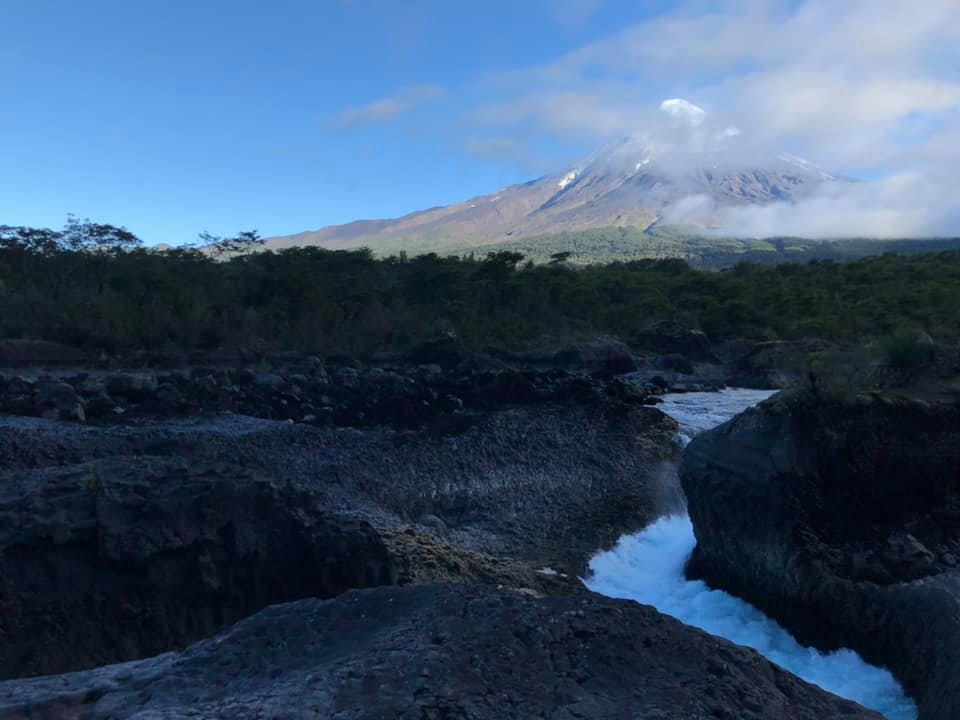
We loaded back up and headed up the river toward Todos los Santos Lake. As we drove, our tour guide Terry told us all about the volcanoes in Chile. There are 55 active volcanoes in Chile. Two of them we had been driving in the shadows of for the past three days. We then walked around the shores of Todos los Santos Lake which was a beautiful lake flanked on all sides by steep mountains. The shoreline was mostly volcanic sand and rock which reminds us how the lake was formed. It was a glacial basin with rivers flowing through it until lava flows from Osorno and Calbuco volcanoes formed a dam across the lower part of the valley. The area gradually began to fill and formed the lake. After our stop at the Lake, we headed back to Puerto Varas for a meeting with Tompkins Conservation.
Our first impression of Tompkins Conservation was the huge 200+ year old home that was actively under restoration that they use as their office. This house is on a hill overlooking the town of Puerto Varas and Lake Llanquihue. This was the first place in Chile where we were asked to remove our shoes as we walked in the front door to help preserve the wood floors of the office. After a tour of the downstairs of the building, we began discussions about what they strive to do. Most of us did not know what Tompkins stood for until we turned the corner into an office and saw the anti-agriculture books on display that they had published.
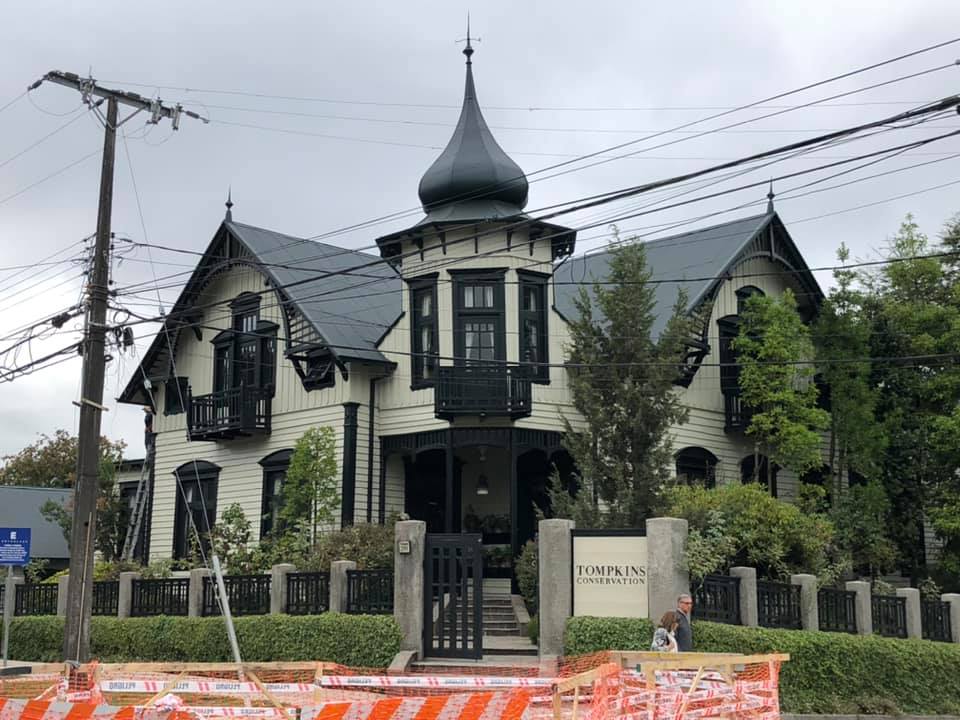
Tompkins Conservation was founded by Kris and Doug Tompkins. Doug also founded The North Face outdoor gear company in 1964. They have four main areas of focus at Tomkins: Park Creation, Restoration, Ecological Agriculture, and Activism. They believe in the enduring value of wilderness and they live this through creating national parks. These parks are open for the public to see and learn about the native species. They see restoration as a “growth industry” and the work of the future – since humans have degraded so much of the planet, they have almost endless opportunities to return ecosystems to health. Tompkins says that they devote substantial attention to developing more ecologically sound forms of agriculture. They strive to preserve wildlands and develop model organic agricultural systems. They strive to make conservation a consequence of production.
We had a good debate with them about how many of their values align with most farmers in production agriculture. Production agriculture is living off the productivity of the land and the farmers have a major incentive to take care of the land they are farming. If the farmer takes care of the land and the environment, it will take care of the farmer. We discussed the conservation efforts of those in our class and how they take care of the land and the wildlife that call it home. We had a good debate, but they are rooted in the direction of their publications and were being paid by donations from people who don’t like agriculture. So, we agreed to disagree. It is always good to learn the opposite viewpoint, much the same as when we visited HSUS in Washington, D.C. We ate lunch lakeside at the Radisson hotel and then headed off to the Puerto Montt airport to begin our journey home to Oklahoma.
Saturday, February 29, 2020
Our flight back home landed at the DFW airport on Saturday morning around 5:00 a.m. We were tasked with collecting our luggage, navigating U.S. customs, and saying goodbyes to a few of our classmates before catching our connecting flight back to Oklahoma. All in all, the process moving through the DFW airport was flawless and before you knew it, we were on our connecting to Oklahoma City. Our group was exhausted from an overnight flight from Santiago and two weeks full of nonstop activities. It seemed like we snapped our fingers and were in the OKC airport dealing out everyone’s luggage before quick hugs and final goodbyes. Our class scattered like a covey of quail and everyone went in different directions on their final journey back home and to their families.
OALP XIX Seminar 13 (Chile Part 1)
Saturday, February 15, 2020
We all met at the OKC airport to begin our travel to Chile. We handed out all the travel information and everyone started the process of getting checked onto the flight and through airport security. We had a few hours to hang out in the airport before our flight to DFW. Before you knew it, we were off and had already landed in Dallas. After getting off the plane, we all went in different directions for dinner at DFW before catching our overnight flight to Santiago, Chile.
Sunday, February 16, 2020
We arrive in Santiago bright and early, and we were met by our tour guide, David Erazo. After going through various check points, we boarded a charter bus and arrived at the Museum of Pre-Columbia Art, where we learned about much of the Chilean history. After visiting the museum, we walked to the capitol building and saw the President’s building. We went to El Galeón Restaurant in the central market and enjoyed various seafood options, a Chilean drink of choice, and delicious empanadas. We then rode through Santiago and viewed the Mapocho River, which means people of the land. The river divides Santiago in two.
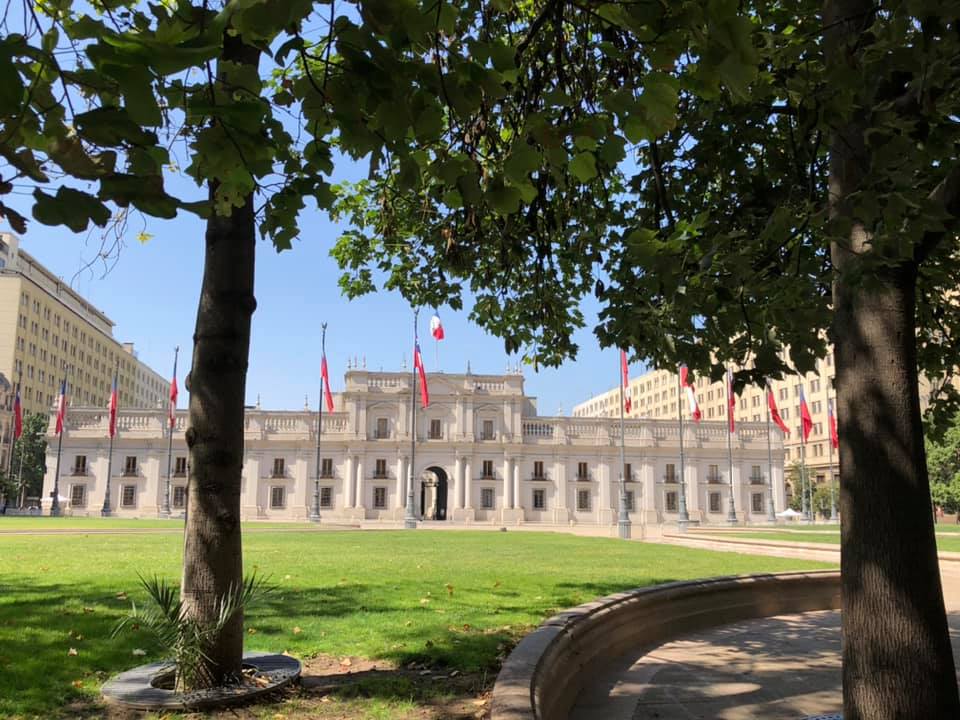
We also drove through the financial district which local Chileans call Sanhattan. We saw the tallest building in Latin America, Gran Torre Santiago, a 62-story skyscraper. At the Artisan Market we were able to see various handmade items such as jewelry, sculptures, and clothing made from alpaca. There were also many live animals for sale such as rabbits, guineas, and various birds. After shopping, several of us enjoyed drinks at Mote con Huesillo. We later arrived at Hotel Torremayor Lyon for the evening of relaxing by the pool and dinner.
Monday, February 17, 2020
Our first visit was to the wholesale market where we met Enrique to learn about the market. The market is 50 years old and features agricultural products from all over Chile, mostly fruits and vegetables. We learned this is mostly for domestic production. Our tour of the market involved sampling produce and discussing the dynamics of food logistics in Chile.
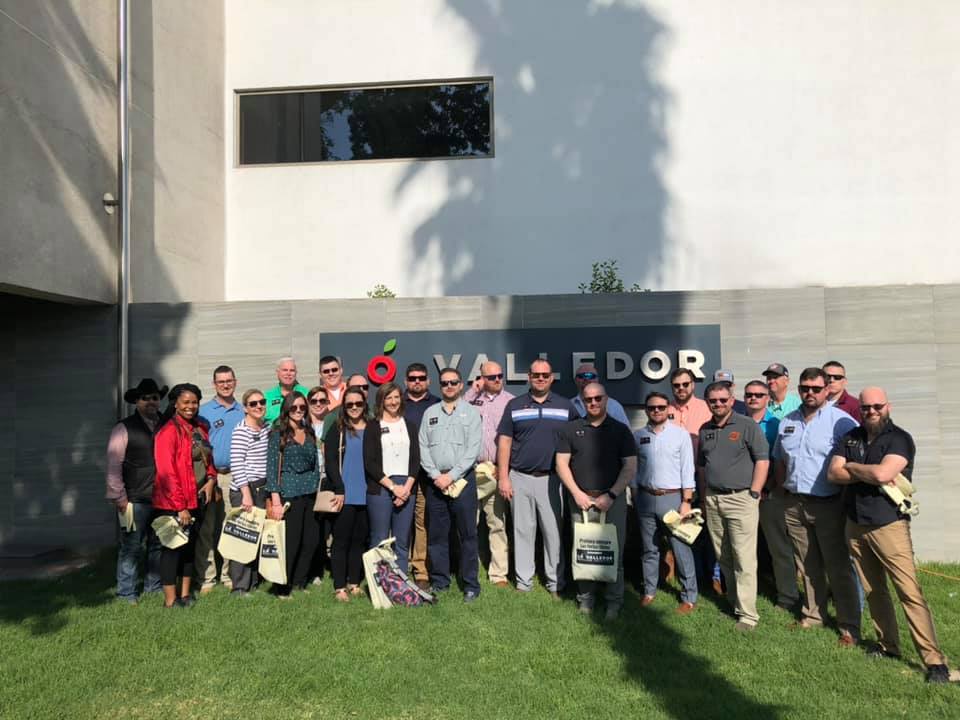
Next, we headed to Coaniquen, a rehabilitation center for burned children. We learned they typically rehabilitate around 8,000 children per year at their three facilities. After meeting several burn patients and spending time with them, we toured the rest of the facilities. The depth of the integrated approach was explained. These include not only direct services, but family care, psychology, community, education, etc. We also learned the entire organization was started by a doctor who recognized the need for post-acute burn care after he witnessed a child that was severely burned and saved in the hospital, but no facilities existed to do rehabilitation.
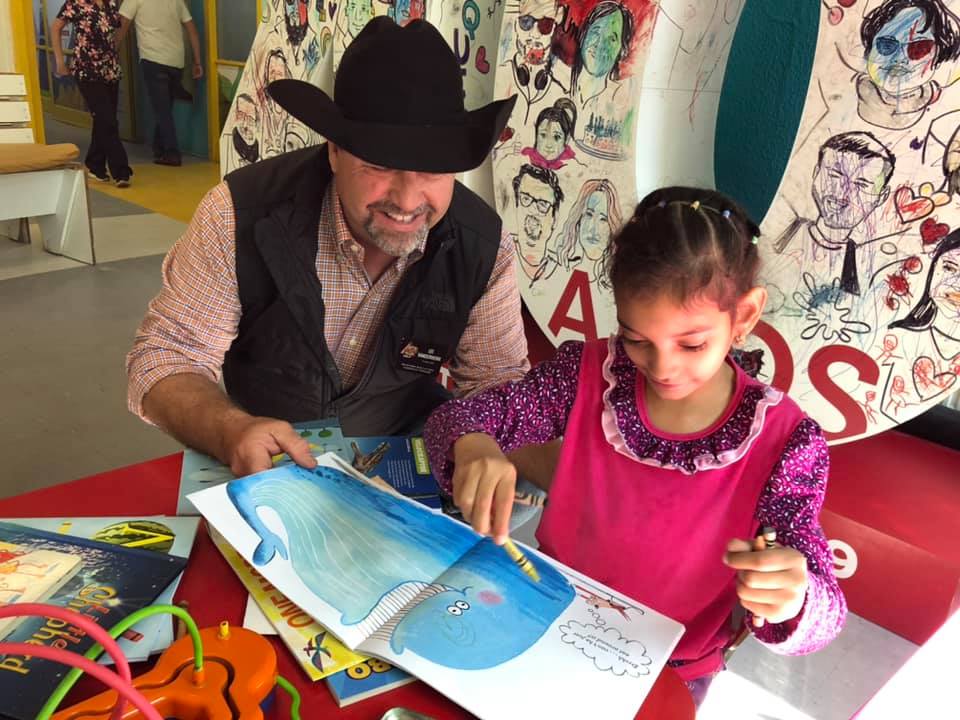
In the afternoon, we had a presentation, followed by Q&A at CORFO. We learned about their many public investments in innovation and entrepreneurship, as well as capacity building. The group traveled back to the Funicular that we tried to visit yesterday but was too busy. In Spanish, “ar” typically designates an infinitive verb form; therefore, this suggests the English translation is “to funiculate,” which is hilarious! The view from the top of San Cristobal Hill was spectacular! We ended the day with a lovely dinner, and Gregg Pickens told many jokes.
Tuesday, February 18, 2020
We first heard from Miguel Galdos, the Regional Director of U.S. Wheat Associates in Santiago. Chile’s population of over 18 million people consume a little over 2 million metric tons of wheat annually. The U.S. exported 1.26 metric of hard red wheat to Chile in 2019. The U.S. wheat has increased its regional market share from 19% to 31% from 2018 to 2019. The average amount of bread a person in Chile consumes annually is roughly 200 pounds.
We also met with the Foreign Agricultural Service from the U.S. Embassy. The number one U.S. export to Chile is beer at $160 million and number two is pork at $120 million. The U.S. exports $1.1 billion of agricultural products to Chile annually and we import $300 million of products. The U.S. has had a free trade agreement with Chile since early 2004.
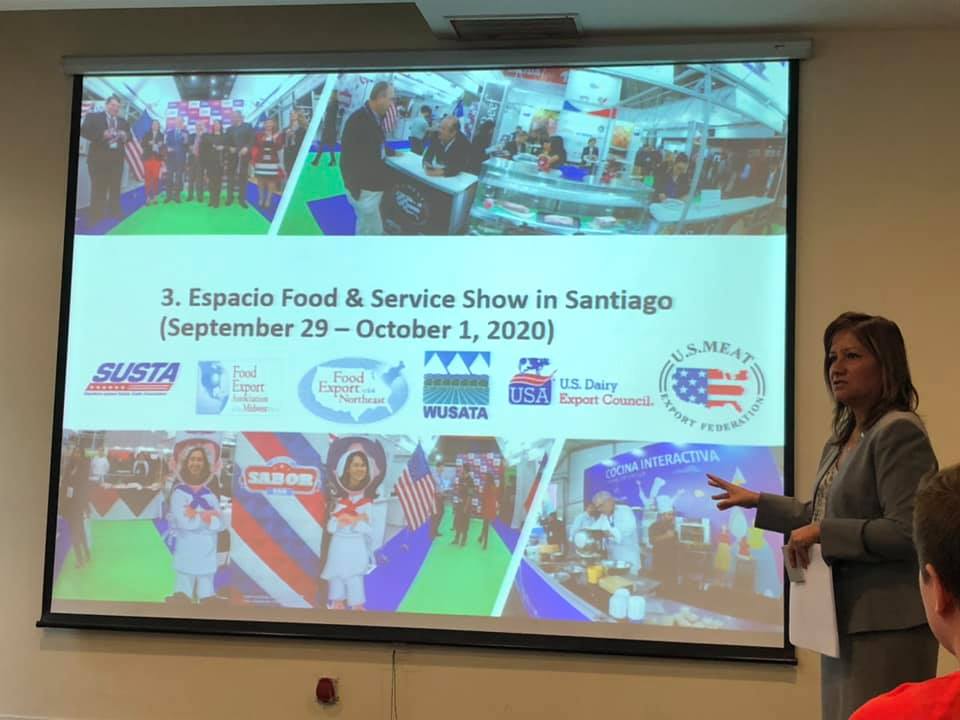
Lastly, we visited the National Society of Agriculture. It was established in 1838 and is one of the oldest agribusiness associations in the world. They represent 90% of farmers in Chile. They are the number one exporter of grapes, cherries, and blueberries in the world, second in avocados, and third in berries and nuts. The average size of a farm in the Chiles is about 20 acres because of the orchard farming.
Wednesday, February 19, 2020
Our first stop of the day was Perez Cruz Family Vineyards. The 1,300-acre vineyard was huge and overlooked a beautiful valley and had some of the best views we had seen on the trip so far. The vineyard specializes in Cabernet Sauvignon and they first planted those grape vines almost 27 years ago. We learned about the horrible 10-year drought they had been going through and unfortunately, they could only plant grapes on less than half of the 1,300 acres. We then went into the wine cellar where we witnessed more than 4,000 barrels filled with yummy wines, and of course we had to taste test. We learned that barrels can determine the taste of the wine and help with the aging. They use American oak and French oak barrels. We had a friendly competition who could identify which barrel was American and which was French. We also saw how they processed the grapes in a large machine. We ended the tour by going into the wine rooms and gift shop. Edmond was also honored with his fearless nickname “Big Papa” by our tour guide.
Roberto and Teresa Barrientos hosted us next at their Los Tres Vineyard, which is a small, organic vineyard. They were only able to irrigate once this year because of the 10-year drought, but from the look of the grapes, they were managing their operation well. Unlike the last vineyard, we learned about their fertilization and that they use the nature around them, and by nature, I mean horse manure. The harvest mechanism was also different from the previous stop. They have 20 people who help them, and it only takes them about two days to fully harvest all the grapes. They produce around eight tons of grapes each year which equals out to about 1,800 bottles they sell to the public. We also enjoyed a lovely Chilean lunch and great conversation with the winery owners.
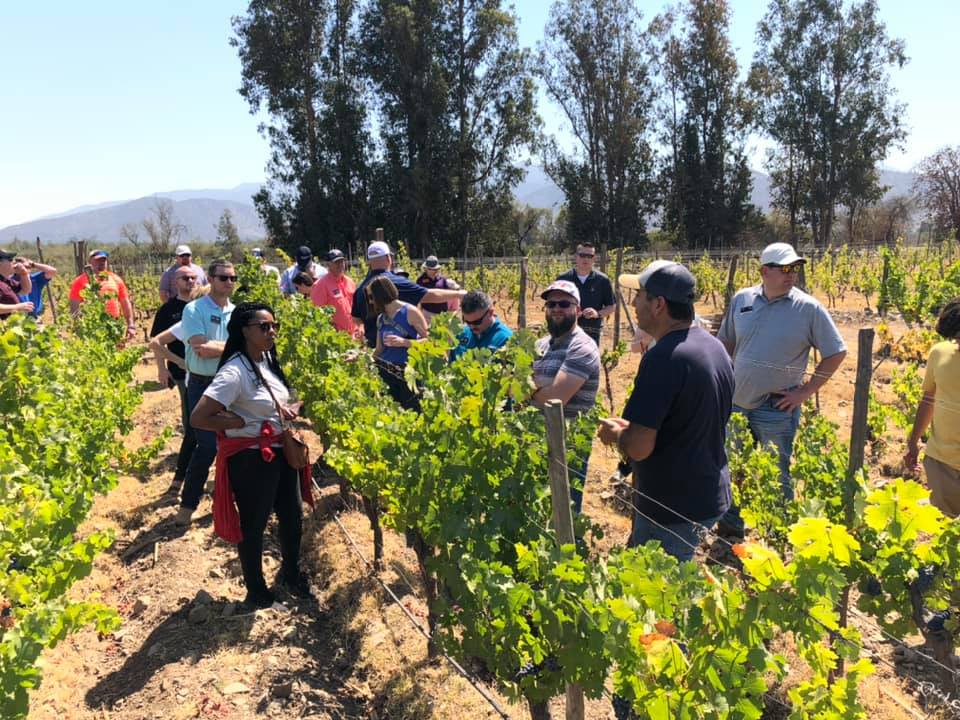
We continued our adventure on the bus while we enjoyed the air conditioning, some water (sin gas) and a quick cat nap. We then arrived at an experimental station that consisted of about 30 acres of different crops grown in Chile. We saw A LOT of corn and sunflower. They explained genetic improvements of the select crops and how they experiment with seed-producing companies in the U.S., Europe, and Japan. We enjoyed a sunny walk of the 30-acre facility and even observed what the corn and sunflowers looked like before harvest.
Thursday, February 20, 2020
We started at a USDA/APHIS fruit inspection site called Los Lirios. All the fruit inspected and approved there will go to the U.S. This is one of six inspection sites across the country. Chile has 22 land ports of entry, 9 ports of entry by air and 17 seaports. Chile is the top exporter of fruit in the Southern Hemisphere, exporting about 90 products. The class toured the facilities. Fun fact learned: Chile does not have any fruit flies in the country. They use 15,000 pheromone traps which are checked every 5-7 days to monitor for it, and they have a male sterilization program where they release 8,000 sterile male flies in Santiago.
The second stop of the day was with Martin and Sebastian Cartwright. They own La Ponderosa Company. Martin did not grow up in the agricultural world. Originally from Chile, he moved to New Zealand after graduating high school. While in New Zealand, he studied/worked in agriculture for seven years. In 1980, he moved back to Chile to take care of his parents and in the meantime bought his first piece of land. Now he has 247 acres that consist of cherries, pears, plums, nectarines, and apples. Cherries are Chile’s biggest export. About 94% of the cherries grown in Chile are exported to China. The Cartwrights produce 7.7 tons of cherries per acre while the national average is 2.2.
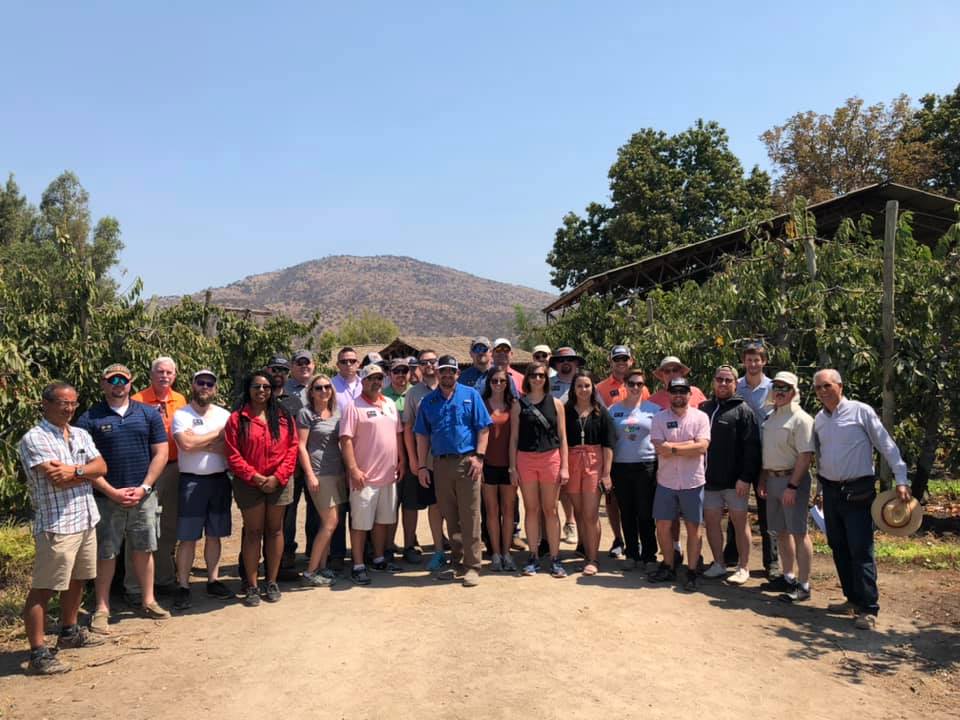
The last stop of the day was the Ministry of Agriculture Center. The center has a big breeding and research program, primarily for cherries and walnuts. The center is testing between 4,000 and 6,000 seedlings of cherries and have found 16 new varieties. The research done on walnuts has been very limited. Currently, they are only researching trees that have been infected with root rot. Next, we learned about CEAF (Center for Advanced Studies in Fruit Growing). CEAF promotes and studies the impact of sustainability of the food chain in Chile. Finally, we heard about the decade-long drought happening in Chile.
Friday, February 21, 2020
Our first visit was with Fransisco Villalon, General Manager of A.C. Baldrich – Chile. This alfalfa seed production company has been in business for 60 years. In the past, they raised seed for the U.S. but now it is all for South America. They produce seed and send to dealers. They provide technical assistance and teach the retail sales team about their seed. They are the only company to produce alfalfa seed in Chile. Deep well irrigation is only operating at half capacity for their seed production because of the drought. They only grow alfalfa on their own land, roughly 400 hectares. They grow in both rows and flat. Rows provide more flowers per square foot and is better for bee pollination, although it is more expensive but produces higher yields. Flat requires less seed to plant and is cheaper, but the bees are not able to pollinate as well and therefore produces less.
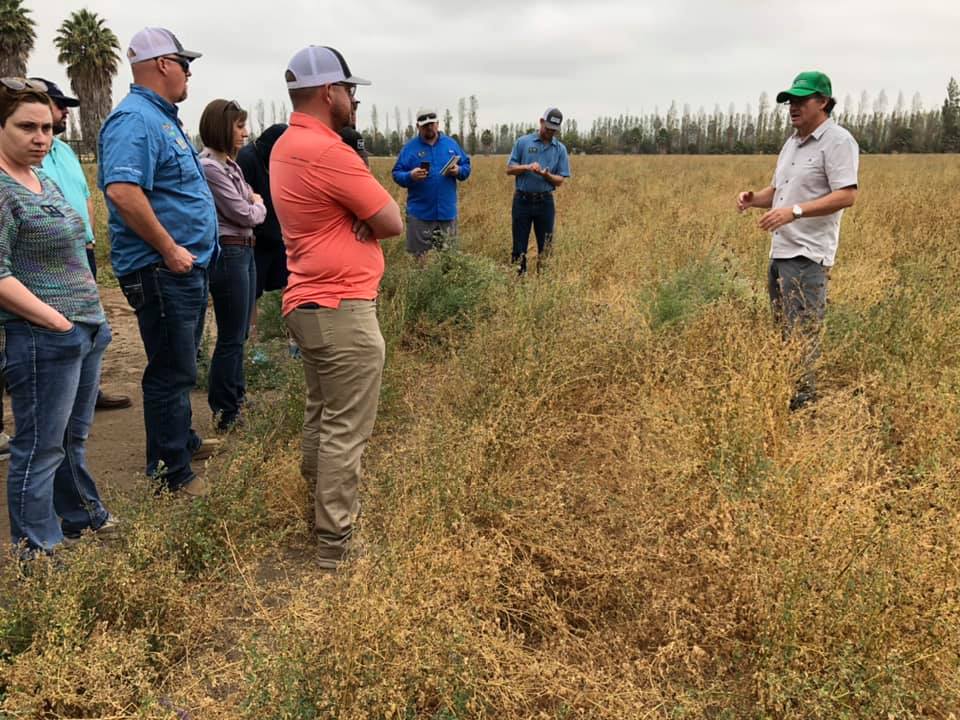
All of their fields are bordered by trees to slow the wind which causes seed loss at harvest. Also, the trees protect the bees from the wind. Normal production is 800 to 1,000 kilos per hectare of clean seed, although this year will be down 15-20% due to the drought. While we were there, we watched them install drip tape. They are increasing their drip irrigation by 30 or so hectares per year. Their rotation includes one year of durum wheat in between alfalfa crops. Their primary focus in breeding is on tonnage and not so much on quality. Their alfalfa will generally yield 20-22 metric tons per hectare and the market is generally a flat price. They have 10 hives of bees per hectare for pollination. We found it interesting that they use iron to coat the seeds and the iron binds to weed seeds of dodder in the cleaning process because it is very difficult to clean and sort such small seed and then magnets are used to remove the dodder.
After lunch, we visited the Nieto Family Farm. Luis and Ivan are two brothers who have taken over the family farm. They currently grow produce for local farmers markets. All the vegetable byproducts are fed to their cattle. They package and label the produce on farm. They have invested in two drones to fly for scouting and spraying their fields. We finished the day with a drive to Valparaiso and dinner at an oceanside restaurant.
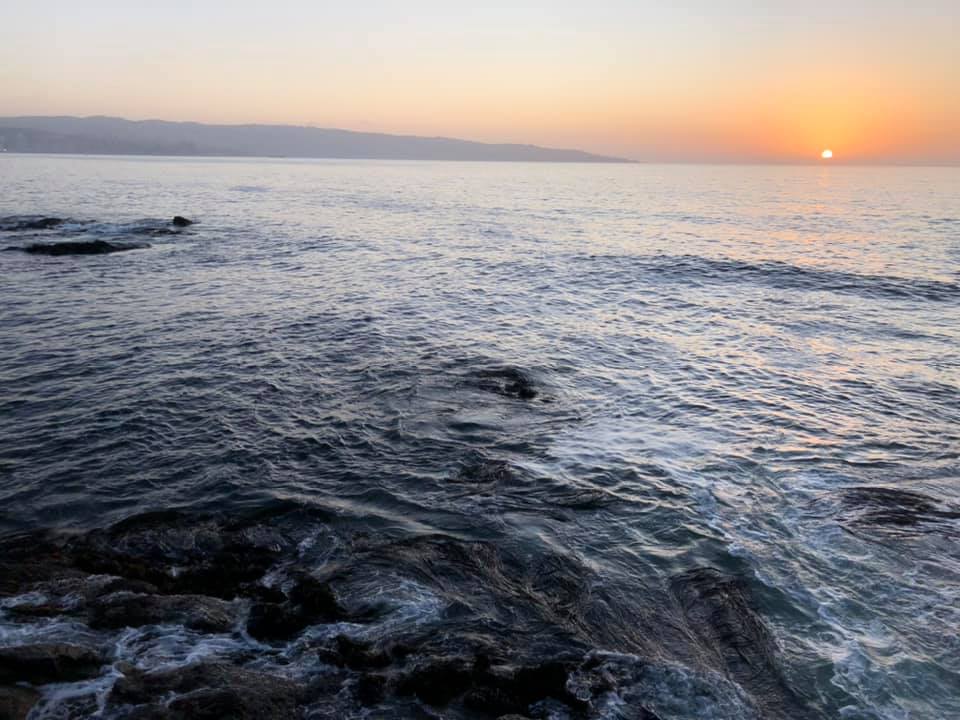
Saturday, February 22, 2020
This morning, we walked around Valparaíso, where the famous street writing and art was displayed across the palettes of building structures. It was amazing to hear the story from our guide and feel and see the personal expression through their art. This art, that many at first thought was just vandals marking on buildings, is now a World Heritage Site. It is an interesting transition to getting thrown in jail for doing it one day and then getting paid to do the exact same thing months or even days later. Later in the afternoon we flew south to Temuco where we would start the next leg of our journey.
